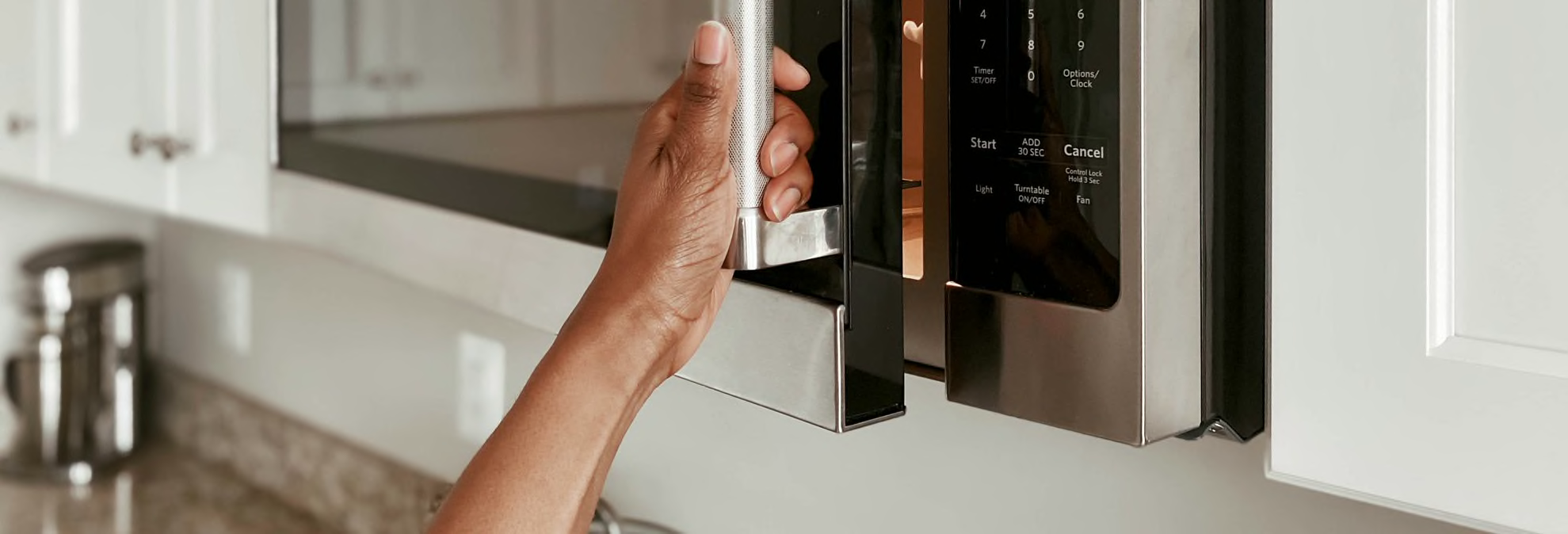
Microwave Buying Guide


Home & Kitchen Writer
Microwaves are sometimes seen as just a cooking shortcut, but they can do a lot more than reheat meals. New capabilities, such as convection cooking and steaming, have made them more useful than ever. And even a simple model can be a lifesaver if you forget to plan a meal and need to quickly defrost something to cook for dinner.
Countertop microwaves offer more flexibility in terms of placement and more options regarding size, capacity, wattage, design, and cost.
An over-the-range (OTR) microwave, on the other hand, might be a good choice if you have limited counter space or prefer a built-in appliance. OTRs are pricier, though. Top-rated models in our tests easily cost $400 or more.
Countertop microwaves are the most common, but an OTR model can round out your suite of kitchen appliances, especially if you prefer those that are all from one brand, with matching knobs, handles, and other details. No matter which type you choose, you’ll want a microwave that measures up in our member surveys for predicted reliability and owner satisfaction.
Once you choose a microwave, use it with care so that it will last. When used properly, you shouldn’t have to replace a microwave more than once every 10 years.
At Consumer Reports, we test microwaves in every price range, and as an independent nonprofit organization, we buy every model we test. Our ratings cover small, midsized, and large countertop microwaves, plus OTR models.
Our tests have found big differences in overall performance. To test heating evenness, we warm up mashed potatoes, and to test defrosting, we use frozen ground beef. We also test the speed of heating, noise, and ease of use. We measure usable capacity, too, because manufacturers often count space you can’t use, like the corners around a turntable. And because OTR models replace a range hood, we also test how well these models vent.
How to Choose a Microwave
How Much Do You Want to Spend?
Countertop microwaves are the most widely sold and usually cost less than over-the-range types. Small models in our ratings start around $60, and midsized models are typically priced from just under $100 up to $500. Some OTR microwaves are available for under $200, but most we’ve tested cost $400 or more. Some countertop models are available with kits that give you a built-in look for less.
Where Will You Put It?
Think about where a microwave will work best, and how much space you have. Midsized countertop models, for example, are typically a little over 20 inches wide and up to 18 inches deep; large microwaves can be an inch or two larger. You’ll want to factor in height as well, but unless you have very low cabinets—the standard spacing is 18 inches—a countertop model should fit in nicely. We list dimensions on the model page for each microwave in our ratings.
How Big Is Big Enough?
The size of the unit doesn’t always translate into usable cooking space. Our research shows that usable capacity for tested microwaves is about 50 percent of what manufacturers claim.
What About Wattage?
Models with more watts typically have more cooking power, but a difference of 100 watts or so doesn’t matter much. All the microwaves in our tests have a minimum of 700 watts; models with higher wattages provide faster and more even cooking. The microwaves we recommend feature power levels between 1,050 and 1,250 watts. (You can see the watts in the full view of our microwave ratings by sliding the Ratings & Specs bar to the right.) The usable capacity and wattages presented below are based on our tested models.
Microwave Types
Depending on your kitchen layout, you’ll want either a countertop microwave or an over-the-range model. Here are some primary differences between the two.
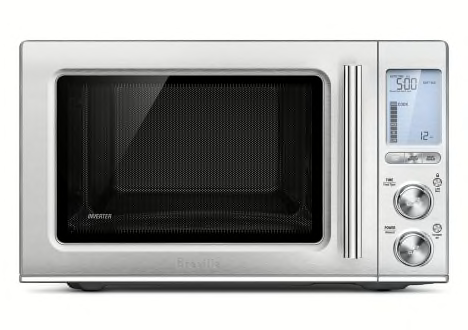
Countertop Microwaves
Countertop microwaves are available at a range of prices and don’t require installation. You can plug them into an ordinary outlet, but use one dedicated to the microwave or it might trip your circuit breaker. Check the usable capacity in our ratings and note the microwave’s external dimensions to make sure it will fit in the space you have for it. Some are equipped with a convection mode that uses a heating element and a fan to bake or roast items as you would in a traditional oven.
Usable Capacity
Most of the models we tested in this category have a usable capacity of about 50 to 60 percent of what manufacturers claim.
Watts
Around 700 for small
800 to 1,250 for midsized
1,000 to 1,250 for large
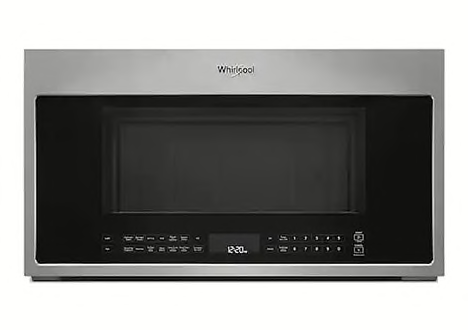
Over-the-Range Microwave Ovens
OTRs free up counter space and tend to give you more space to heat food because they’re fairly wide. Because of their placement, though, they may be a bit hard to reach if you’re on the shorter side. They have exhaust fans, some of which can be vented to the outside, but don’t expect an OTR to exhaust cooking gases as well as a range hood. When we test venting ability, we measure the volume of air drawn in by the microwave’s internal fan on its highest setting. OTR microwave installation might require an electrician.
Usable Capacity
Most of our tested OTR models have a usable capacity of about 40 to 50 percent of what manufacturers claim.
Watts
900 to 1,200
Features to Focus On
As prices for microwaves go up, so do the number of features. One that we find invaluable is a sensor, which measures the steam that food emits and turns off the microwave when cooking is done. Here are other features to consider.
- 1
- / 7
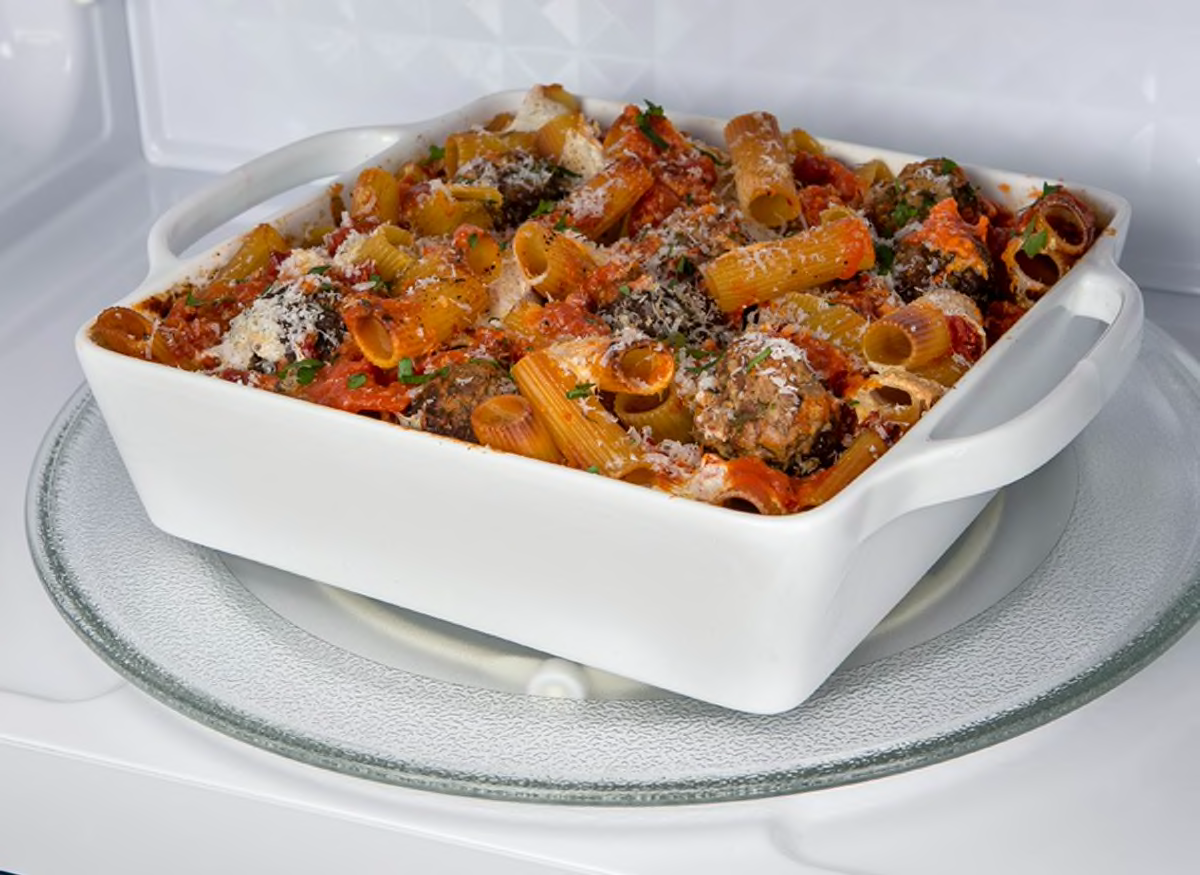
Turntables and Trays
They keep food moving for uniform heating. Most microwaves have a turntable that rotates food. Others have a rectangular tray that slides from side to side, which might work better for large casseroles or platters.
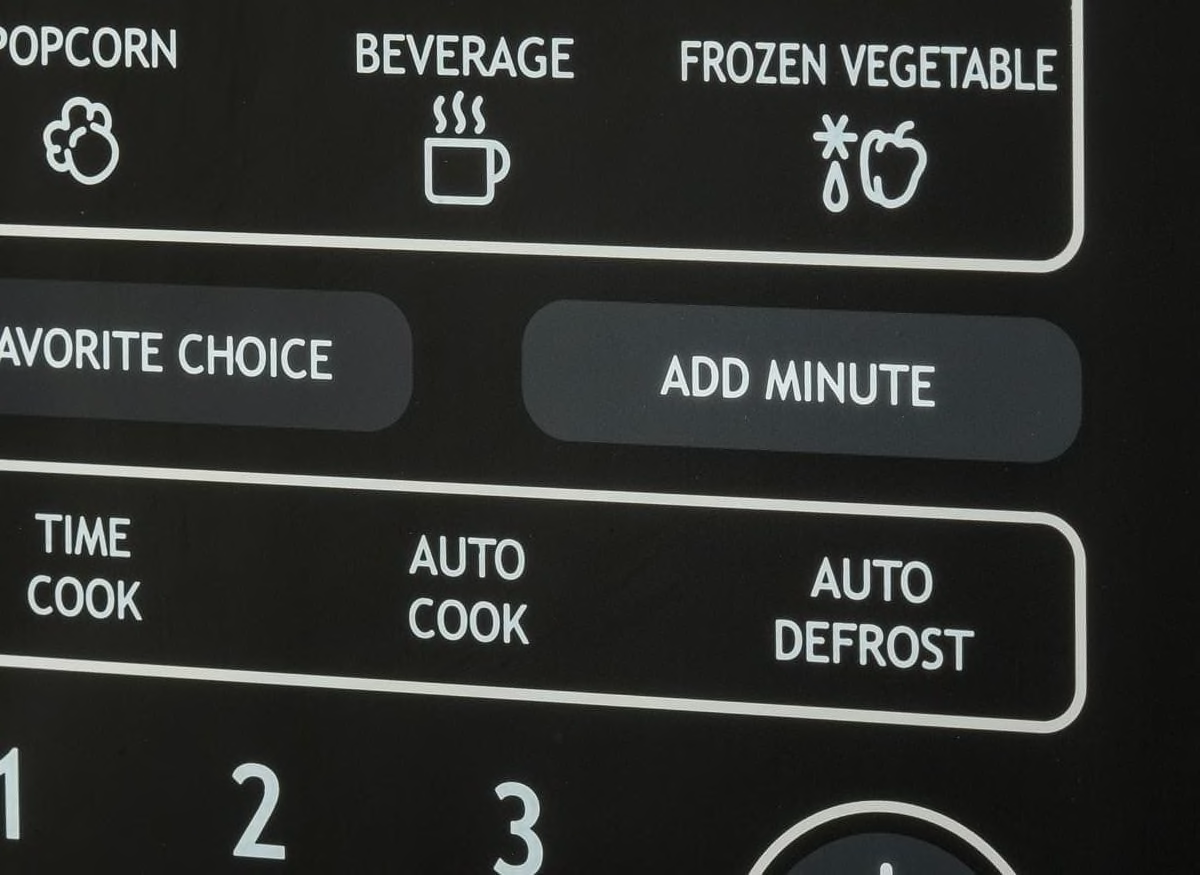
Quick Keys
A 1-minute or 30-second key requires just a tap to extend the preset cooking time, maintaining whichever power level was selected. It also allows quick adjustments to your previous settings. Pushing the button more than once multiplies the time extension.
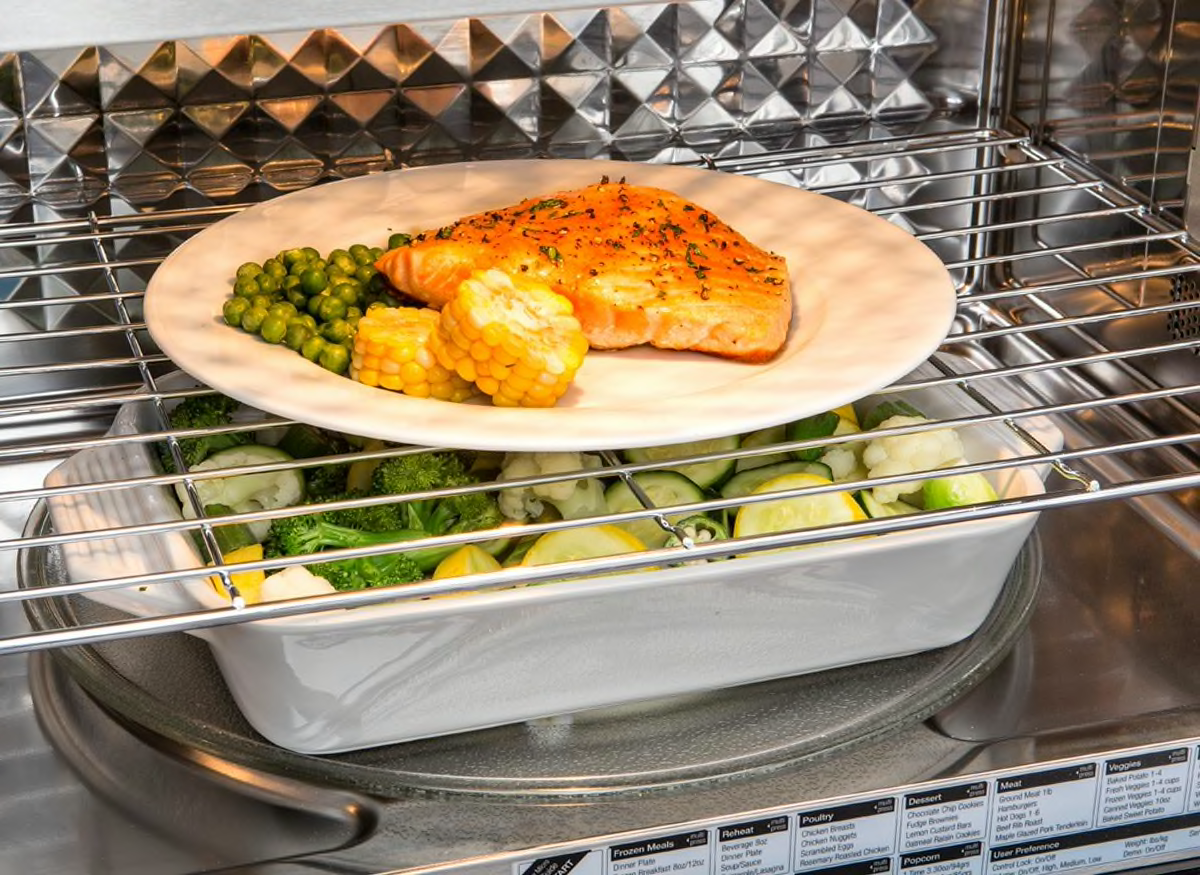
Racks
These let you speed things up by cooking multiple dishes simultaneously. They may also improve convection cooking by allowing heat to flow beneath the cooking dish. But you may have trouble fitting even a coffee mug in some models unless you remove the rack, so check those dimensions when shopping.
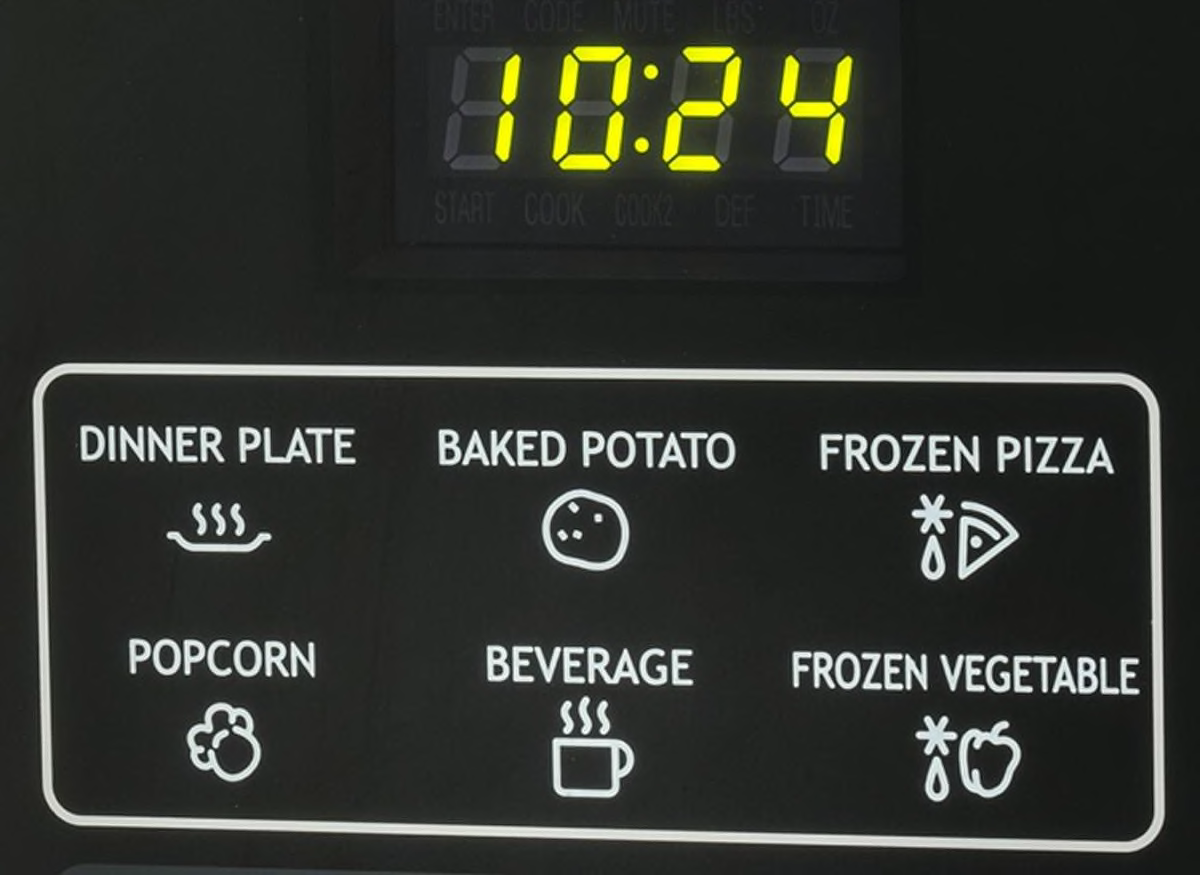
Shortcut Keys
They take the guesswork out of cooking popular foods such as popcorn and frozen vegetables, and some models have shortcuts for oatmeal, pasta, stew, and grits.
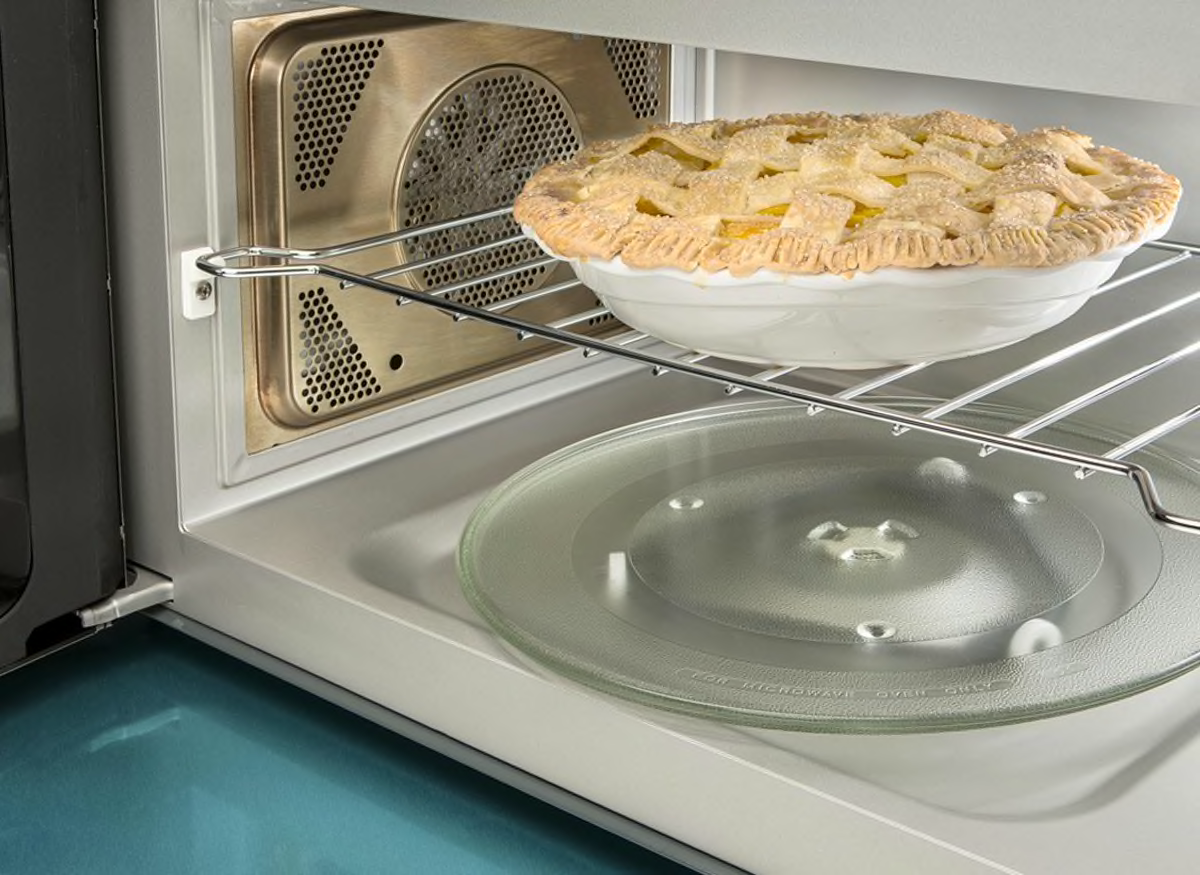
Convection Cooking, Grilling, and Browning
These features offer the appeal of a second oven in your kitchen. But none of the models we tested consistently provided the results you’d get from a traditional oven or a grill.
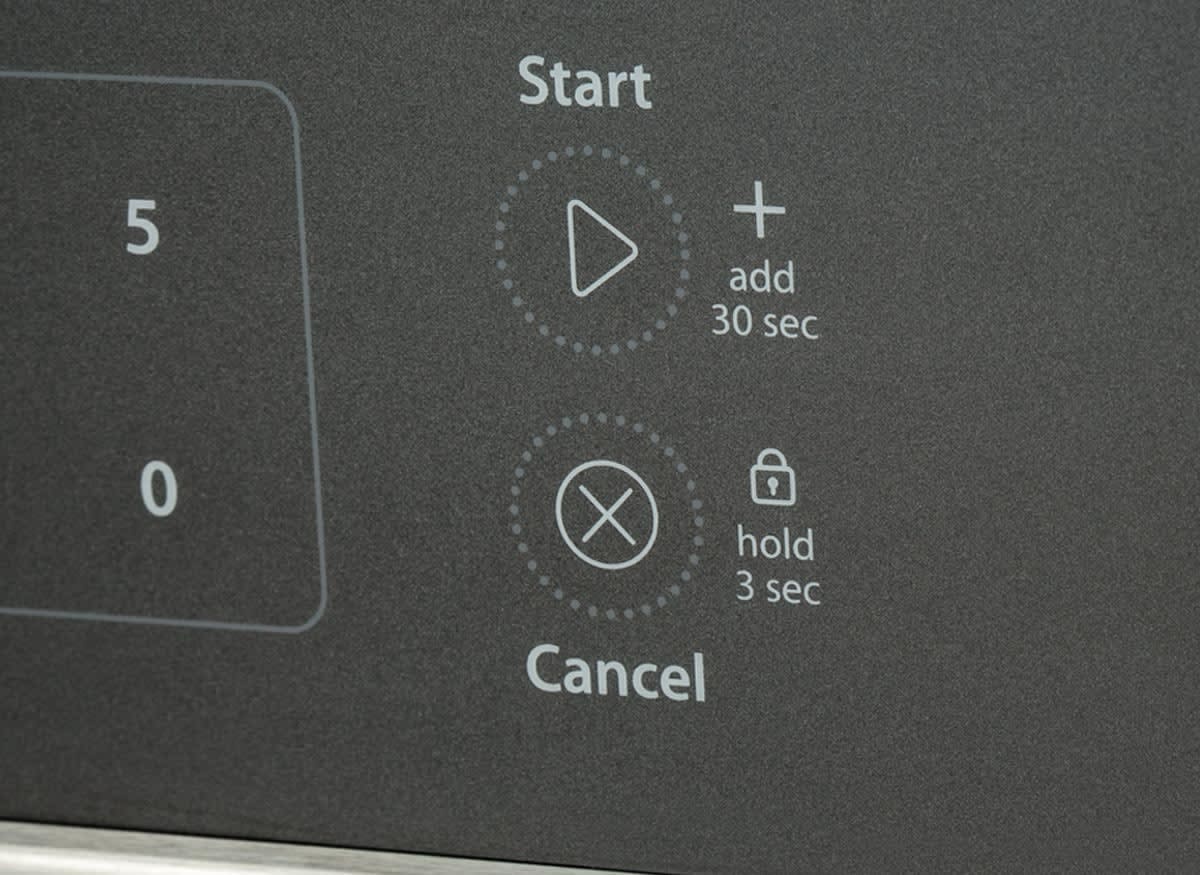
Child Lock
If there are children in the house, a lockout function prevents them from opening the door and possibly getting burned by hot food.
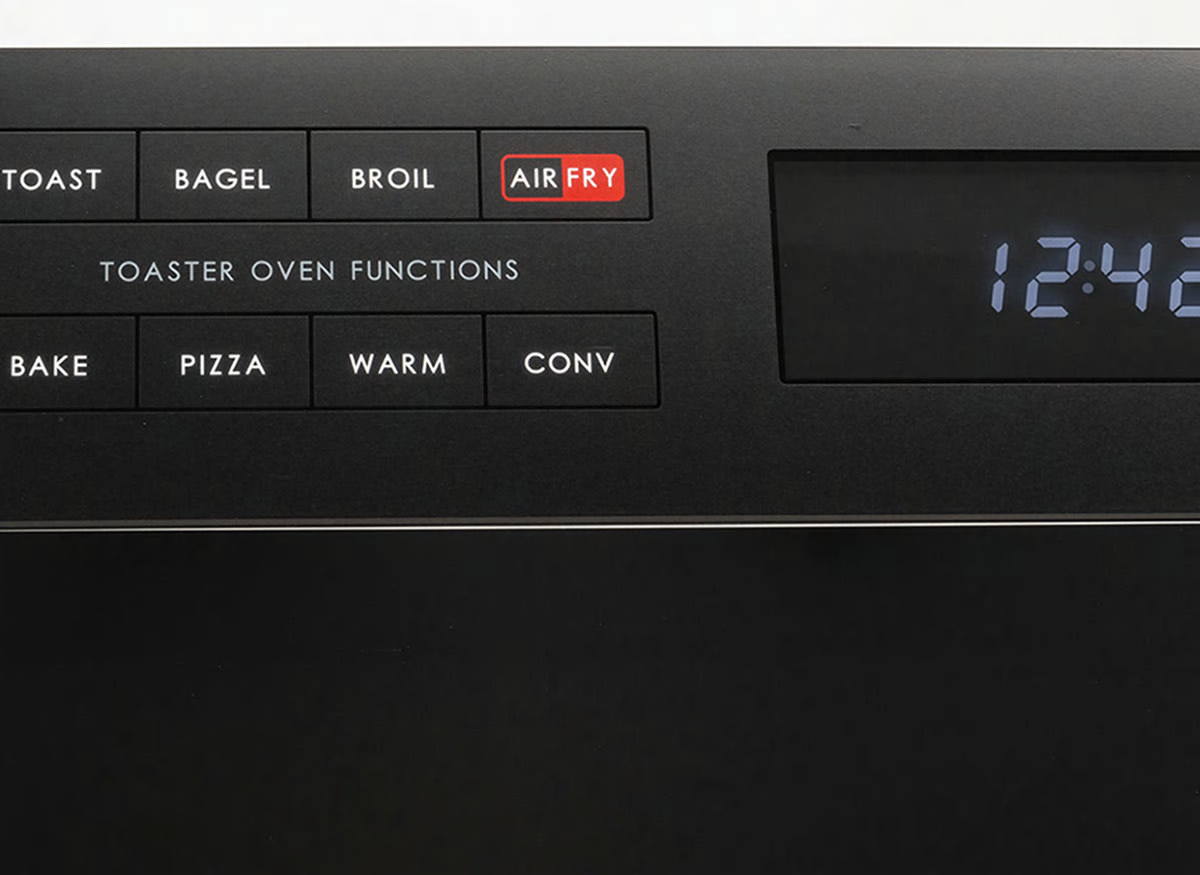
Air-Fry Mode
A microwave with an air-fry setting can crisp your food using a convection fan to disperse heat across the surface, drying it ever so slightly on all sides.
Turntables and Trays
They keep food moving for uniform heating. Most microwaves have a turntable that rotates food. Others have a rectangular tray that slides from side to side, which might work better for large casseroles or platters.
Quick Keys
A 1-minute or 30-second key requires just a tap to extend the preset cooking time, maintaining whichever power level was selected. It also allows quick adjustments to your previous settings. Pushing the button more than once multiplies the time extension.
Racks
These let you speed things up by cooking multiple dishes simultaneously. They may also improve convection cooking by allowing heat to flow beneath the cooking dish. But you may have trouble fitting even a coffee mug in some models unless you remove the rack, so check those dimensions when shopping.
Shortcut Keys
They take the guesswork out of cooking popular foods such as popcorn and frozen vegetables, and some models have shortcuts for oatmeal, pasta, stew, and grits.
Convection Cooking, Grilling, and Browning
These features offer the appeal of a second oven in your kitchen. But none of the models we tested consistently provided the results you’d get from a traditional oven or a grill.
Child Lock
If there are children in the house, a lockout function prevents them from opening the door and possibly getting burned by hot food.
Air-Fry Mode
A microwave with an air-fry setting can crisp your food using a convection fan to disperse heat across the surface, drying it ever so slightly on all sides.
Microwave Brands
Frigidaire microwaves, made by Electrolux, are available in countertop and OTR categories. They’re available at retailers nationwide.
General Electric (GE) is one of the major microwave brands and offers countertop and OTR models. The ovens can be found in big-box retailers and at independent appliance dealers nationally.
This brand, sold at Amazon and Sears, offers a wide range of countertop and OTR microwave ovens.
LG offers countertop and OTR microwaves. They’re sold at Home Depot, Sears, and large regional and independent appliance dealers.
This brand offers a small choice of countertop models and a wider variety of OTR versions. They’re sold at big-box stores, such as Home Depot and Lowe’s, and independent appliance retailers.
This manufacturer offers a wide range of countertop models in the U.S. market, ranging from midlevel to high-end. A number of Panasonic countertop microwave ovens can be converted to built-ins with a kit you can purchase. Models are widely available.
Samsung offers models in both countertop and OTR categories. The ovens, from basic to fully featured, are widely available nationally at all major retailers.
Sharp manufactures countertop and OTR models. They’re sold through retailers such as Best Buy, Lowe’s, Sears, Target, and Walmart.
Whirlpool offers basic to multifeatured countertop and OTR models. The ovens are sold at most major retailers.
Other brands in our ratings include Amana, Bosch, Café, Electrolux, Haier, Hotpoint, Ikea, KitchenAid, and Magic Chef.



























